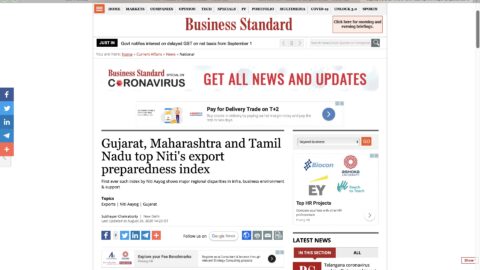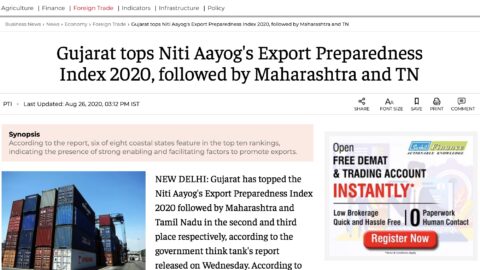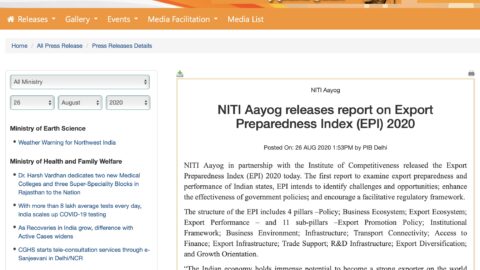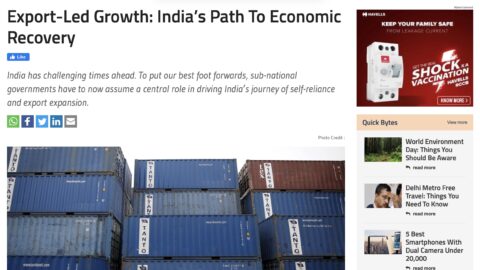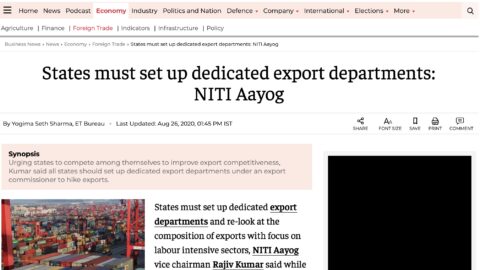Vice-Chairman, National Institution for Transforming India (NITI Aayog)
Rising exports must be an integral component of India’s development strategy. Exports constitute one of the four pillars of the economy that the country has traditionally relied upon to accelerate its growth ever since the economic reforms in the 1990s, with the other three pillars being human resources, investments and governance.
India’s merchandise exports have witnessed a growth from USD 275.9 Billion in 2016-17 to USD 303.5 Billion in 2017-18, and USD 331.0 Billion in 2018-19. However, the current fiscal has been dealt a blow with the COVID-19 pandemic and its the adverse impacts, which would alter not just the national but the entire global economic landscape. India’s exports have shrunk by 60% in April 2020 on account of the pandemic. Further, COVID-19 has resulted in large-scale disruption in global supply chains and demand, resulting in cancellation of orders. Amidst this setback, it is imperative for India’s trade and exports to recoup and rediscover the path to recovery and growth.
Keeping in mind the concept of “Atmanirbhar Bharat” or “Self-reliant India”, it is time for India to play a vital role in the present day dynamic economic landscape. Attaining self-reliance implies becoming globally competitive by removing bottlenecks at various steps in the export process. India’s exports sector holds immense potential to become a viable alternative supplier for some of the major economies. To realize this potential, it is crucial that India turns to its States and Union Territories and makes them active participants in the country’s export efforts. This would be achieved by creating an enabling framework, establishing the required institutions, removing bottlenecks, and incentivizing exports. Even in difficult times, when the world has been struggling with COVID-19, Indian states have responded by ramping up the production of essential products through successful national-level cooperation. This is evident from the large-scale production of products such as personal protective equipment (PPEs) and hydroxychloroquine (HCQ).
In an attempt to realise this new vision, the Export Preparedness Index 2020 evaluates the State’s potential and capacity. The presence of basic facilities, a conducive environment and the reach of the exports’ footprint – these are some of the key factors that will be used for the assessment. It is hoped that the detailed insights from this index will guide all stakeholders towards strengthening the export ecosystem at both the national and sub-national levels.This will help India increase its share in global trade from the present 1.7% in 2018 to at least 5% in this decade.
I would like to take this opportunity to congratulate the entire team of NITI Aayog for their unique and laudable effort. I would also like to extend my compliments to the Central Ministries, Nodal Officers from the State Departments, and our knowledge partner, Institute for Competitiveness, for their contribution towards preparing the Index.


